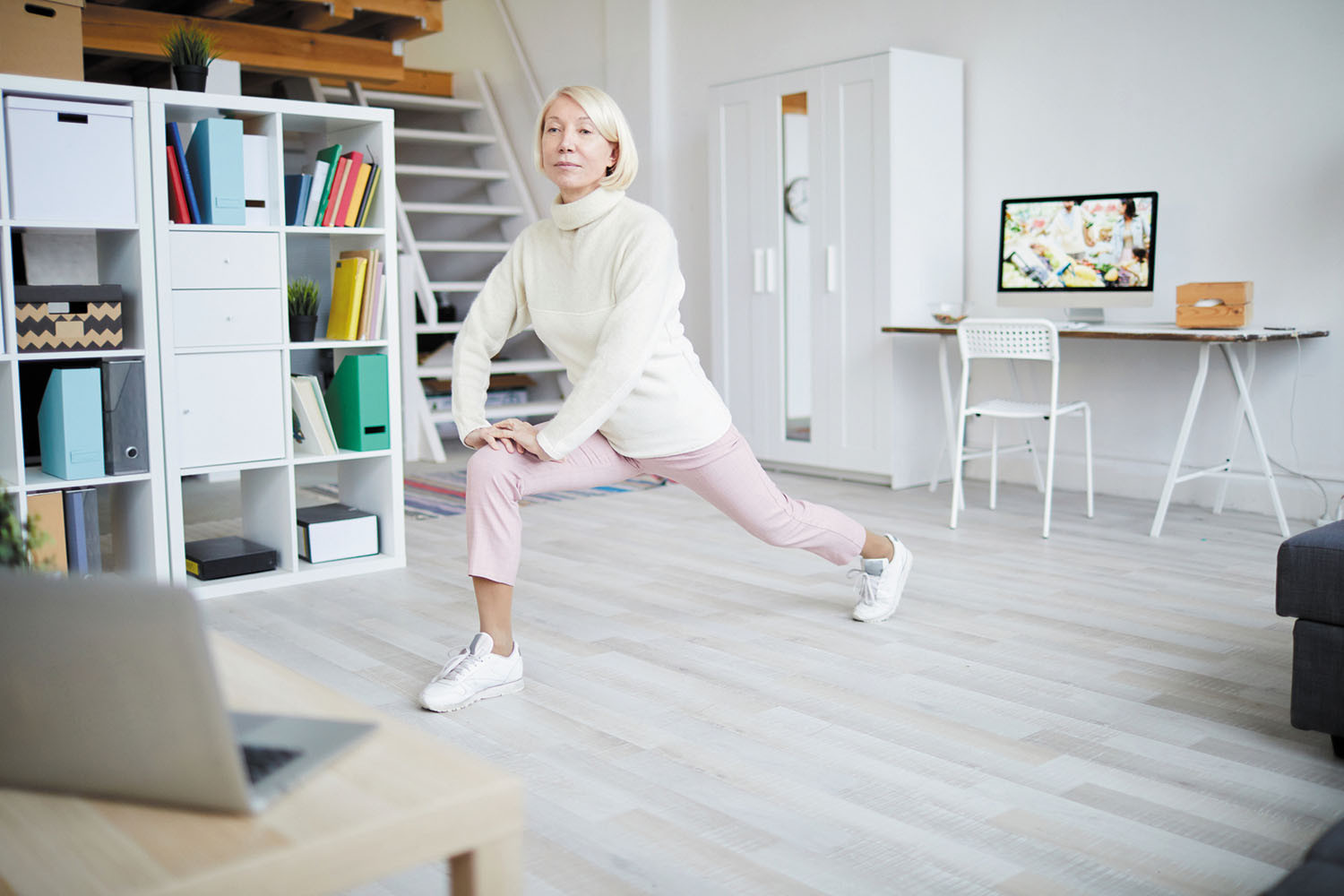
Wildfires: How to cope when smoke affects air quality and health

What can magnesium do for you and how much do you need?

Dry socket: Preventing and treating a painful condition that can occur after tooth extraction

What happens during sleep �� and how to improve it

How is metastatic prostate cancer detected and treated in men over 70?

Could biofeedback help your migraines?

What is autism spectrum disorder?

Plantar warts: Options for treating this common foot condition

Cancer survivorship: What comes next after treatment

Nutritional yeast: Does this savory, vegan seasoning pack a nutritional punch?
Exercise & Fitness Archive
Articles
Try this: Swinging with kettlebells
Kettlebell swings are a simple exercise that helps improve posture and strengthens muscle groups that often do not get enough attention, such as those in the back of the thighs, the buttocks, the hips, and the lower back.
Move of the month: Pull-down
Using stretchy bands (known as exercise bands or resistance bands) can be a good way to ease into strength training. Pull-downs target the muscles of the middle and lower back and the front of the upper arms.
Exercise and your arteries
Regular exercise is crucial to keeping the circulatory system functioning optimally, which in turn is beneficial to overall health and protection from heart disease.
Preventing sudden heart death in children and teens: 4 questions can help
It's extremely rare for a child or teen to die suddenly because of a heart problem, but several conditions can increase the risk of sudden death. A policy statement from the American Academy of Pediatrics outlines four questions about personal and family health history that can help identify children who may be at risk.
Tips to avoid constipation
There are many ways one can try to avoid constipation. For example, lifestyle remedies may help—such as increasing dietary fiber, getting regular exercise, and drinking three to six cups of water per day. If those approaches don't work, doctors recommend using fiber supplements, such as psyllium husk (Metamucil), methylcellulose (Citrucel), or wheat dextrin (Benefiber). Another supplement that might help is magnesium. When all strategies fail, it may be time to try over-the-counter medication. One option is an osmotic laxative such as polyethylene glycol (Miralax).
Looking for a mellow form of exercise? Try tai chi
Tai chi is a slow, flowing form of exercise that's sometimes described as "meditation in motion." It can be a good gateway exercise for people who cannot or will not engage in more conventional types of exercise. Tai chi may help lower cholesterol levels, reduce blood pressure, and dampen inflammation, all of which are linked to better heart health. Tai chi may also be a promising addition to cardiac rehabilitation.
Checking for an abdominal aortic aneurysm: Who, when, and why?
Guidelines recommend that men ages 65 to 75 who have ever smoked cigarettes be screened for an abdominal aortic aneurysm (AAA). But other people at high risk might also consider this one-time test. These include older men and women with a family history of AAA and those with chronic obstructive pulmonary disease or atherosclerotic heart disease. The screening test is simple and painless, and it costs roughly $50, which is fully covered by Medicare for men who meet the guideline criteria, as well as for people ages 65 to 75 with a family history of AAA.
Don't take back pain sitting down
Pain when sitting can be caused by a number of common problems, including problems with the discs that cushion the vertebrae in the back. Lying down can help the pain temporarily, but the goal should be to get up and move as soon as possible. People should see a doctor if your pain is extremely severe, if it comes back after getting better, or if it occurred after an injury.
Why you should move �� even just a little �� throughout the day
People who sit for long, uninterrupted periods of time may increase their risk of cardiovascular disease, even if they get the recommended 30 minutes of daily exercise. Sedentary behavior appears to make people more prone to developing insulin resistance and inflammation, which are key players in the buildup of fatty plaque inside arteries. Experts say people should add short bursts of movement to their daily routine to break up long periods of sitting.
Step up your walking game
Most people typically get around 3,000 to 4,000 steps per day doing things such as household chores, going to the mailbox, or grocery shopping. But people who walk 8,000 steps per day (about 4 miles in total) may live longer than those who walk just 4,000 steps per day—and walking speed doesn't seem to matter. People who walk 12,000 steps per day may live even longer than those who take 8,000 steps. But the added benefit was small, and walking even more may not make a difference.

Wildfires: How to cope when smoke affects air quality and health

What can magnesium do for you and how much do you need?

Dry socket: Preventing and treating a painful condition that can occur after tooth extraction

What happens during sleep �� and how to improve it

How is metastatic prostate cancer detected and treated in men over 70?

Could biofeedback help your migraines?

What is autism spectrum disorder?

Plantar warts: Options for treating this common foot condition

Cancer survivorship: What comes next after treatment

Nutritional yeast: Does this savory, vegan seasoning pack a nutritional punch?
Free Healthbeat Signup
Get the latest in health news delivered to your inbox!
Sign Up











